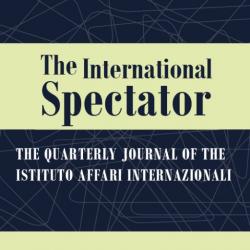China’s Structural Power and the Fate of the BCIM Economic Corridor

In 2013, China and India officially established an economic corridor (the Bangladesh–China–India–Myanmar Economic Corridor, BCIM-EC) that would cut across Myanmar and Bangladesh. But while the formal process of cooperation among the four countries is in place, many obstacles to its implementation remain at the international, national and local levels. Is meaningful collaboration possible within the BCIM-EC framework? In terms of two dimensions of structural power as conceptualised by Susan Strange, security and trade, China’s structural power in Myanmar is much stronger than India’s. It is therefore likely that this imbalance will prevent the BCIM-EC project, which currently appears to be overshadowed by China’s Belt and Road Initiative, from having a fruitful outcome.
Keywords: International Political Economy, structural power, China, Myanmar, India, Belt and Road Initiative
-
Details
The International Spectator, Vol. 55, No. 3, September 2020, p. 17-34 -
In:
-
Issue
55/3 -
ISBN/ISSN/DOI:
10.1080/03932729.2020.1782071
